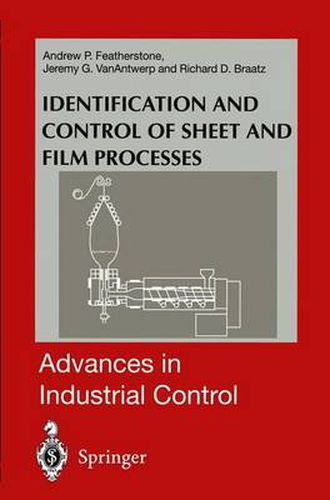Readings Newsletter
Become a Readings Member to make your shopping experience even easier.
Sign in or sign up for free!
You’re not far away from qualifying for FREE standard shipping within Australia
You’ve qualified for FREE standard shipping within Australia
The cart is loading…






This title is printed to order. This book may have been self-published. If so, we cannot guarantee the quality of the content. In the main most books will have gone through the editing process however some may not. We therefore suggest that you be aware of this before ordering this book. If in doubt check either the author or publisher’s details as we are unable to accept any returns unless they are faulty. Please contact us if you have any questions.
Sheet and film processes include coating, papermaking, metal rolling, and polymer film extrusion. Products produced by these processes include paper, bumper stickers, plastic bags, windshield safety glass, and sheet metal. The total capitalization of industries that rely on these processes is well over USD500 billion worldwide. These processes are notorious for being difficult to control.The goal of this book is to present the theoretical background and practical techniques for the identification and control of sheet and film processes. It is explained why many existing industrial control systems perform poorly for sheet and film processes. Identification and control algorithms are described and illustrated which provide consistent and reliable product quality. These algorithms include an experimental design technique that ensures that informative data are collected during input-output experimentation, model identification techniques that produce a process model and an estimate of its accuracy, and control techniques that take into account actuator constraints as well as robustness to model uncertainties.The algorithms covered in this book are truly the state of the art. Variations on some of the algorithms have been implemented on industrial sheet and film processes. Other algorithms are in various stages of implementation. All of the algorithms have been applied to realistic simulation models constructed from industrial plant data; many of these studies are included in this book.
$9.00 standard shipping within Australia
FREE standard shipping within Australia for orders over $100.00
Express & International shipping calculated at checkout
Stock availability can be subject to change without notice. We recommend calling the shop or contacting our online team to check availability of low stock items. Please see our Shopping Online page for more details.
This title is printed to order. This book may have been self-published. If so, we cannot guarantee the quality of the content. In the main most books will have gone through the editing process however some may not. We therefore suggest that you be aware of this before ordering this book. If in doubt check either the author or publisher’s details as we are unable to accept any returns unless they are faulty. Please contact us if you have any questions.
Sheet and film processes include coating, papermaking, metal rolling, and polymer film extrusion. Products produced by these processes include paper, bumper stickers, plastic bags, windshield safety glass, and sheet metal. The total capitalization of industries that rely on these processes is well over USD500 billion worldwide. These processes are notorious for being difficult to control.The goal of this book is to present the theoretical background and practical techniques for the identification and control of sheet and film processes. It is explained why many existing industrial control systems perform poorly for sheet and film processes. Identification and control algorithms are described and illustrated which provide consistent and reliable product quality. These algorithms include an experimental design technique that ensures that informative data are collected during input-output experimentation, model identification techniques that produce a process model and an estimate of its accuracy, and control techniques that take into account actuator constraints as well as robustness to model uncertainties.The algorithms covered in this book are truly the state of the art. Variations on some of the algorithms have been implemented on industrial sheet and film processes. Other algorithms are in various stages of implementation. All of the algorithms have been applied to realistic simulation models constructed from industrial plant data; many of these studies are included in this book.